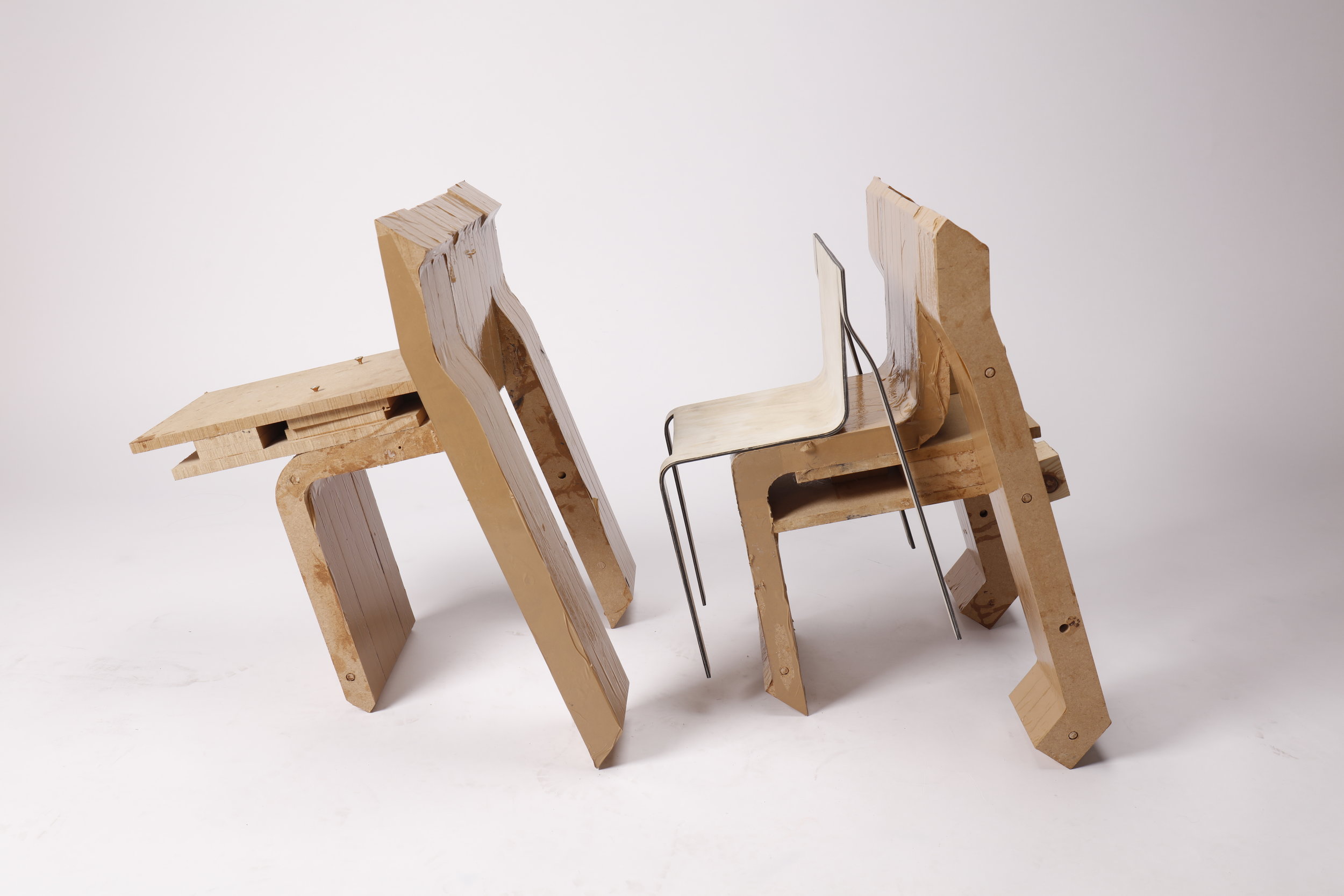
joachim froment 0.6 Chair
0.6 chair is made of a new process of laminated wood and carbon fibre. Designed by Joachim Froment in 2017


The aim of this project was to create a piece with a minimum of material, a product often used but that manifests the fragility of our ecosystem and the preciosity of material. This chair is designed to be light, robust, and last longer.

Make a stackable chair

0.6 Chair
Design and develop a new process of wood lamination with a carbon fiber reinforcement. The aim of this project is to design a higly perfoming wooden chair with a minimum of material bringing the thickness under 0.6cm and lightness under 2kg.
Europe and North America account for about two-thirds of the global production and consumption of sawn wood (which hovers at 5OO million cubic meters a year) with an estimated $40 trillion according to an FAO report. In the last 300 years, we have cut about 40% of global forests following WWF. Based on historical trends, the production and consumption of wood products are expected to increase. OECD speaks about a Wood harvesting grew by 20% between 1980 and 2008. Across the board, wooden chairs weigh between 6 and 15kg, which means that it’s important to design long-lasting products and reduce the quantity of wood per product to counterbalance this market trend.
How to design strong wooden furniture with a minimum amount of wood?


0.6 Chair
The structural element of the 0.6 Chair is made out of carbon fiber material





This project pushes mechanical properties to its limits and will create an illusion of extreme fragility as the thickness of the chair will be extremely thin (under 6mm thickness).
This work is currently in progress but I’m working on an extra light and thin wooden chair made out of a lamination technique. The whole chair will be made in one piece using only a press mold in two parts.

Two parts of the mould





Carbon fiber is a material with great properties. It enables here to bring down the thickness under 6mm (4.8mm) and still support a weight of about 350kg.
This product is long-lasting as the carbon fiber does not oxidize like steel, age like plastic, or move like wood. But it lasts longer also because the surface of the chair can easily be repaired or customized. Using a simple pattern that fits on the structure enables you to scrape the surface and apply a new pattern. This pattern could be the same or another type of wood veneer but it could also be another material, like fabric, leather, cork, or a thin metal sheet.


















